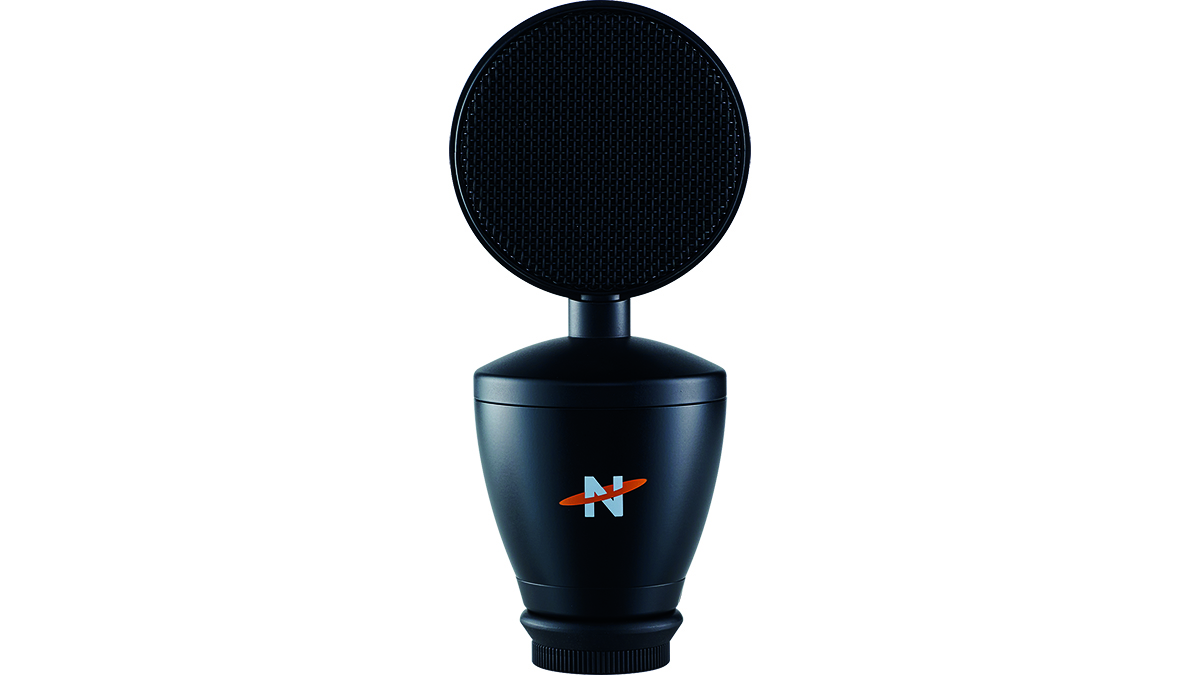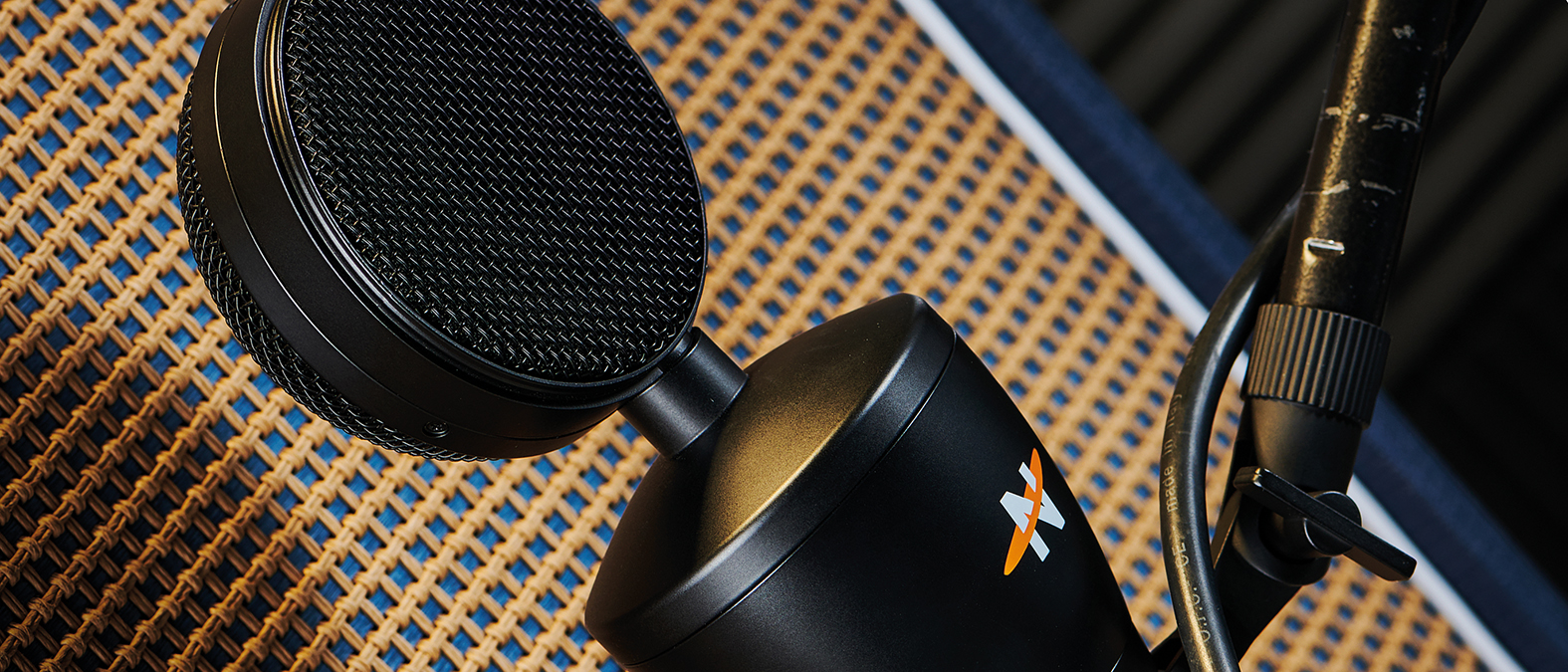MusicRadar Verdict
Its high max SPL figure really helps make it a mic fit for almost any scenario and, despite the lack of a pop filter, it’s superb value.
Pros
- +
Authentic, neutral sound. No muddiness or boominess when close miking.
- +
Excellent build quality for price.
- +
High max SPL rating of 145 dB makes it a very versatile mic.
Cons
- -
Lack of character, but not necessarily a bad thing.
- -
No pop filter included with this second version.
- -
Internal shock mount isn’t that effective.
MusicRadar's got your back
Neat Worker Bee II: What is it?
Neat’s original Worker Bee microphone was bee-themed through and through, from its honeycomb pop filter to its stripey yellow and black body. So keen was Neat to create a buzz that even the included shock mount and XLR cable were run through with yellow stripes.
But no more. Somebody in management has been wielding the insecticide spray because its replacement, the Worker Bee II, is a much more understated affair. Its squat little body is certainly unusual, but there’s nothing overtly Disneyesque about it, no comedic hive-inspired design cues or whacky colours. In fact, it resembles a nondescript curtain pole finial.
Which isn’t necessarily a bad thing. You see, the Worker Bee II is a sub $100/£100 do-it-all microphone, aimed at everyone from gamers to guitarists, ukulele artists to YouTubers. Many in its target market will be posting video content online, where the last thing they want is a brightly dressed mic that steals the limelight. The Worker Bee II is more chorus line than movie star.
Just like its predecessor, this XLR mic is a cardioid electret condenser with a medium-sized (25mm) diaphragm, which boasts a decent max SPL figure of 145 dB. According to Neat, the mic’s frequency response is a typical 20 Hz – 20 kHz, dynamic range is 134 dB-A and self-noise is 11 dB-A. All solid figures that make the Worker Bee II a versatile mic that shouldn’t disgrace itself, whatever task it’s put to.

At 16cm x 7.5cm (6.25” x 3") it’s not exactly tiny, but it is small enough to be unobtrusive on a podcaster’s boom arm or easily manoeuvred around the sweet spot of a guitar cab or kick drum. Its all-metal body is beautifully finished in satin black and, weighing in at 420g (0.93lbs), it feels substantially built, but not so heavy that it’s going to tax your boom arm. In short, the Worker Bee II gives the impression of being a much more expensive mic.

Neat Worker Bee II: Performance and verdict
So, what does it sound like? Typically, for a smallish diaphragm mic, it has a flat frequency response curve, so going in, we predicted it would favour accuracy over character. Sure enough, it’s a very neutral sounding mic that recorded my gorgeous Yamaha LS26 acoustic faithfully, reproducing its sparkly top end exceptionally well.
Built to cope with some real screamers, making it ideal for metal genres and the like
Moving on to vocals, a large diaphragm mic would do a better job of introducing some personality and warmth, but nevertheless the Worker Bee II worked well, just leaving us with some EQ adjustments to complete in post. Its high max SPL figure means that it’s built to cope with some real screamers, making it ideal for metal genres and the like.
Want all the hottest music and gear news, reviews, deals, features and more, direct to your inbox? Sign up here.
The Worker Bee II is also great for voice applications, such as podcasting. We found the recording sweet spot was about 6 inches from the mic, but even when we edged closer the proximity effect never muddied our recordings. It’s a very smooth mic that makes up for its lack of warmth with great articulation. Our only bugbear is the lack of a pop filter, which was included with the original version but that’s no longer the case, apparently. Shame.
Finally, that 145 dB max SPL figure and its manageable size makes it a great mic for miking up guitar speakers and drums. Unfortunately, we didn’t get to record drums, but it performed admirably on both clean and driven electric guitar tones.
MusicRadar verdict: Its high max SPL figure really helps make it a mic fit for almost any scenario and, despite the lack of a pop filter, it’s superb value.
Neat Worker Bee II: The web says
"There’s not a lot of 'all in ones' that go to the next level, but this one yields surprisingly excellent results across the board – all at a budget-friendly price."
Performer Magazine
Neat Worker Bee II: Hands-on demos
Sound Speeds
Free Podcast Tools
Creators Village
Neat Worker Bee II: Specifications
- KEY FEATURES: Cardioid electret condenser microphone with XLR connector. Capsule: 25mm diameter condenser. Frequency Response: 20 Hz – 20 kHz, Sensitivity: 19.0 mV/Pa @ 1 kHz (1 Pa = 94 dB SPL), Maximum SPL: 145 dB SPL (2.5k ohms, 0.5% THD), S/N Ratio: 83 dB-A (IEC 651), Noise Level: 11 dB-A (IEC 651), Dynamic Range: 134.0 dB-A @2.5k.
- CONTACT: Neat Microphones
When Simon's childhood classical guitar teacher boasted he 'enjoyed a challenge', the poor man had no idea how much he'd underestimated the scale of the task ahead. Despite Simon's lack of talent, the experience did spark a lifelong passion for music. His classical guitar was discarded for an electric, then a room full of electrics before Simon discovered the joys of keys. Against all odds, Simon somehow managed to blag a career as a fashion journalist, but he's now more suitably employed writing for MusicRadar and Guitar World. When not writing or playing, he can be found terrifying himself on his mountain bike.

